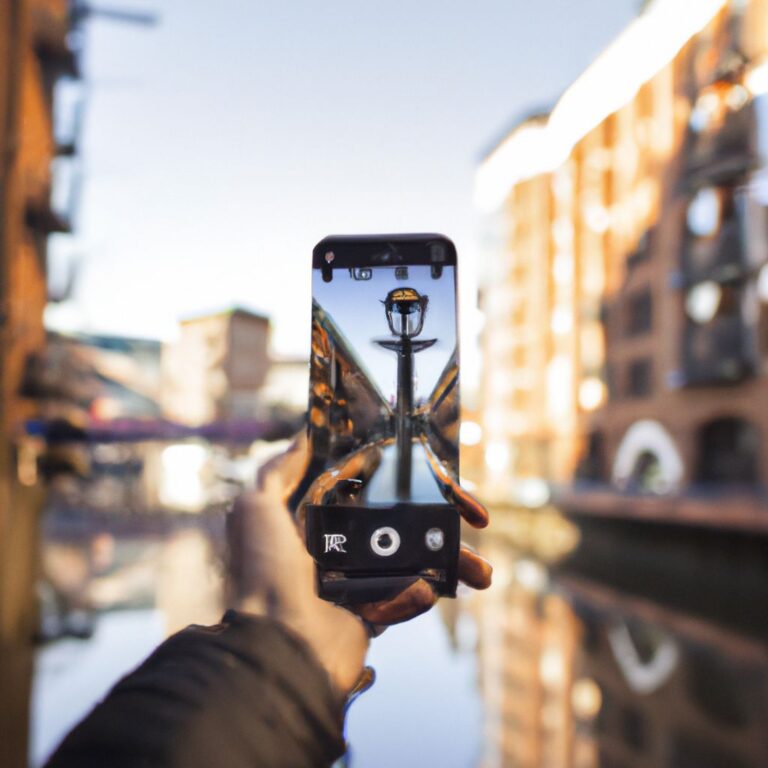The History Of Red Digital Cinema
The Origins and Founding of Red Digital Cinema: A Game-Changer in the Film Industry
Red Digital Cinema, a pioneering force in digital cinematography, was founded in 2005 by Jim Jannard, the visionary entrepreneur behind Oakley, Inc. Jannard set out to revolutionize the way films were made by introducing cutting-edge digital camera technology that would rival traditional 35mm film cameras in terms of resolution, dynamic range, and color reproduction. The establishment of Red Digital Cinema marked a significant milestone in the history of filmmaking, signaling the beginning of a new era of digital cinematography.
The inception of Red Digital Cinema was driven by Jannard’s passion for innovation and his desire to challenge the status quo in the film industry. Recognizing the limitations of existing digital cameras at the time, Jannard assembled a team of experts in the fields of engineering, design, and cinematography to develop a groundbreaking digital camera system that would meet the demanding requirements of filmmakers. The result was the Red One camera, which quickly gained recognition for its exceptional image quality and performance.
The launch of the Red One camera in 2007 marked a turning point in the film industry, as filmmakers began to embrace digital cinematography as a viable alternative to traditional film cameras. The Red One’s ability to capture high-resolution images with unmatched clarity and detail quickly made it a favorite among cinematographers and directors, propelling Red Digital Cinema to the forefront of the industry.
Over the years, Red Digital Cinema has continued to push the boundaries of digital cinematography, introducing a series of innovative cameras and accessories that have redefined the filmmaking process. From the compact and versatile Red Scarlet to the high-end Red Weapon camera system, Red Digital Cinema has remained at the forefront of technological advancements, providing filmmakers with the tools they need to bring their creative vision to life.
Today, Red Digital Cinema stands as a symbol of innovation and excellence in the film industry, with its cameras being used to capture some of the most visually stunning and technically advanced films of our time. As the company continues to push the boundaries of what is possible in digital cinematography, one thing remains clear: Red Digital Cinema is here to stay, continuing to shape the future of filmmaking for years to come.
The Evolution of Red Cameras and Technology
Since its inception, Red Digital Cinema has been at the forefront of innovation in the film industry. The evolution of Red cameras and technology is a testament to the company’s commitment to pushing the boundaries of digital cinematography.
Red Digital Cinema was founded in 2005 by Jim Jannard, the same visionary behind Oakley sunglasses. Jannard set out to revolutionize the way movies were made by creating high-quality digital cameras that could rival traditional film cameras. This led to the development of the Red One, the company’s first camera, which quickly gained popularity among filmmakers for its superior image quality and versatility.
Over the years, Red has continued to refine and improve its cameras, introducing new models with advanced features and capabilities. One of the most significant advancements in Red technology was the introduction of the Red Dragon sensor in 2013. This sensor significantly improved image quality, providing cinematographers with greater dynamic range and color accuracy.
In 2017, Red announced the release of the Monstro 8K VV sensor, further pushing the boundaries of digital cinematography. This sensor allowed filmmakers to capture stunning 8K footage with unprecedented detail and clarity. The Monstro sensor has since been used in a wide range of high-profile films, solidifying Red’s reputation as a leader in digital cinematography.
Apart from advancements in sensor technology, Red has also focused on developing innovative accessories and tools to complement its cameras. From modular camera systems to advanced post-production software, Red has established itself as a one-stop-shop for filmmakers looking to create high-quality content.
In recent years, Red has expanded its product lineup to include compact cinema cameras like the Red Komodo, catering to a broader range of filmmakers and content creators. This move has democratized access to Red’s cutting-edge technology, allowing more artists to bring their creative visions to life.
The evolution of Red cameras and technology has been marked by a relentless pursuit of excellence and a commitment to innovation. As the film industry continues to evolve, Red Digital Cinema remains at the forefront, shaping the future of digital cinematography with its groundbreaking technology.
The Impact of Red Digital Cinema on the Film Industry
Red Digital Cinema has revolutionized the film industry since its inception. By providing high-quality digital cameras known for their exceptional resolution and dynamic range, Red has transformed the way movies are made and viewed. Filmmakers around the world have embraced Red cameras for their ability to capture stunning visuals with remarkable clarity and detail.
One of the key impacts of Red Digital Cinema on the film industry is the democratization of filmmaking. In the past, high-quality equipment was expensive and often out of reach for independent filmmakers. However, Red’s commitment to delivering cutting-edge technology at an affordable price has empowered filmmakers at all levels to create visually compelling content without breaking the bank.
Furthermore, Red cameras have set new standards for image quality, pushing the boundaries of what is possible in digital cinematography. The cameras’ ability to capture rich colors, deep shadows, and vibrant highlights has made them a top choice for industry professionals looking to achieve a cinematic look in their projects. As a result, Red has become synonymous with high-end production value and visual excellence in the film community.
In addition to their technical capabilities, Red cameras have also had a significant cultural impact on the film industry. With their widespread adoption by filmmakers, Red cameras have become iconic symbols of innovation and creativity in the digital age. The distinct look and feel of Red footage have helped shape the visual language of contemporary cinema, influencing the way stories are told and visuals are crafted on screen.
The impact of Red Digital Cinema on the film industry cannot be overstated. From revolutionizing the filmmaking process to setting new standards for image quality and creative expression, Red has cemented its position as a driving force in the world of digital cinematography. As technology continues to evolve and new innovations emerge, it is clear that Red Digital Cinema will remain at the forefront of cinematic storytelling for years to come.
Notable Films Shot with Red Cameras
Red Digital Cinema has revolutionized the film industry with its cutting-edge cameras, known for their high-quality imagery and versatility. Many notable films have been shot using Red cameras, further solidifying the brand’s reputation in the world of cinematography.
One of the most iconic films shot with Red cameras is "The Hobbit" trilogy directed by Peter Jackson. The decision to use Red Epic cameras for this epic fantasy series was a groundbreaking choice that showcased the capabilities of Red’s technology in capturing intricate details and vibrant colors of Middle-earth.
Another significant production that utilized Red cameras is "Guardians of the Galaxy Vol. 2" directed by James Gunn. The film’s stunning visual effects and vivid colors were captured flawlessly with the Red Weapon camera, contributing to the movie’s overall aesthetic and immersive experience for audiences worldwide.
In addition, the critically acclaimed movie "Gone Girl" directed by David Fincher was shot using Red Dragon cameras. The camera’s ability to capture subtle nuances in lighting and shadow played a pivotal role in enhancing the film’s suspenseful atmosphere and engaging storytelling.
Furthermore, the award-winning film "Manchester by the Sea" directed by Kenneth Lonergan also opted for Red cameras during production. The Red Weapon camera was chosen to capture the emotional depth of the characters and the raw beauty of the film’s coastal setting, resulting in a visually compelling and emotionally resonant cinematic experience.
Moreover, the Marvel Cinematic Universe blockbuster "Avengers: Infinity War" and "Avengers: Endgame" relied on Red cameras to bring the epic superhero battles to life on the big screen. The films’ action sequences, visual effects, and intricate details were expertly captured using Red’s state-of-the-art camera technology.
The use of Red cameras in these notable films exemplifies the brand’s commitment to pushing the boundaries of cinematography and storytelling. As Red Digital Cinema continues to innovate and evolve, filmmakers around the world are empowered to create visually stunning and immersive cinematic experiences that captivate audiences and stand the test of time.
The Future of Red Digital Cinema: Prospects and Developments
Red Digital Cinema has continuously pushed the boundaries of filmmaking technology since its inception, and the future looks even more promising. As technology advances and demands for higher quality content increase, Red is at the forefront of innovation in digital cinematography. With a strong foundation in creating state-of-the-art cameras, Red is poised to make significant developments that will shape the future of the film industry.
One of the key areas where Red Digital Cinema is focusing its efforts is on enhancing the resolution and dynamic range of its cameras. By developing new sensors and imaging technologies, Red aims to provide filmmakers with tools that offer unparalleled clarity and detail in their visuals. This commitment to pushing the limits of image quality will likely lead to more immersive and visually stunning cinematic experiences for audiences worldwide.
Additionally, Red is expected to continue its investment in developing compact and versatile camera systems. As the demand for more mobile and lightweight filming equipment grows, Red is anticipated to introduce new camera models that offer the same high quality but in a more flexible and user-friendly design. This will empower filmmakers to capture breathtaking visuals in various environments with ease and precision.
Furthermore, Red Digital Cinema is likely to further expand its ecosystem of camera accessories and software solutions. By offering a comprehensive suite of products that seamlessly integrate with its cameras, Red aims to provide filmmakers with a complete filmmaking package that enhances their creative capabilities. From advanced color grading software to innovative lens options, Red is committed to supporting filmmakers at every stage of the production process.
The future of Red Digital Cinema is bright and filled with exciting prospects for the film industry. With a dedication to innovation, quality, and user experience, Red is set to continue revolutionizing digital cinematography and setting new standards for excellence in filmmaking. Filmmakers can look forward to a future where the boundaries of creativity are limitless, thanks to the advancements and developments from Red Digital Cinema.
Conclusion
In the ever-evolving landscape of digital cinematography, Red Digital Cinema has emerged as a trailblazer, revolutionizing the way filmmakers bring their visions to life. From its humble beginnings in 2005 to its current status as a leader in the industry, Red has consistently pushed the boundaries of technology and creativity. The company’s commitment to innovation and quality has resulted in the creation of cutting-edge cameras that have set new standards for image quality and performance.
Since its founding, Red Digital Cinema has continued to refine and expand its product line, introducing new cameras and technologies that have garnered praise from filmmakers around the world. The evolution of Red cameras, from the early days of the Red One to the latest DSMC2 line, has been characterized by a dedication to pushing the limits of what is possible in digital filmmaking. Each new release has brought improvements in image quality, resolution, and dynamic range, allowing filmmakers to capture stunning visuals with unparalleled clarity and detail.
The impact of Red Digital Cinema on the film industry cannot be overstated. The company’s cameras have been used to shoot a wide range of projects, from independent films to Hollywood blockbusters, and have helped to bring filmmakers’ visions to life on the big screen. The flexibility and versatility of Red cameras have made them a favorite among cinematographers, who appreciate the ability to customize their rigs to suit the unique requirements of each project.
Throughout its history, Red Digital Cinema has been associated with a number of notable films that have pushed the boundaries of visual storytelling. From "The Hobbit" trilogy to "Guardians of the Galaxy," Red cameras have been used to capture some of the most visually stunning and technically impressive scenes in modern cinema. The company’s commitment to providing filmmakers with the tools they need to create truly immersive cinematic experiences has earned it a reputation as a leader in the industry.
Looking to the future, Red Digital Cinema shows no signs of slowing down. With ongoing research and development efforts aimed at bringing new technologies to the market, the company is poised to continue pushing the boundaries of what is possible in digital cinematography. From advancements in resolution and image quality to new tools for virtual production and visual effects, Red is committed to staying at the forefront of innovation and creativity in the film industry.
The history of Red Digital Cinema is a testament to the power of innovation and dedication in the world of digital cinematography. From its origins as a disruptive startup to its current status as a global leader, Red has consistently pushed the boundaries of what is possible in filmmaking. With a focus on quality, creativity, and technological advancement, Red Digital Cinema has left an indelible mark on the film industry, inspiring filmmakers to push the limits of their creativity and bring their visions to life in ways that were once considered impossible.



